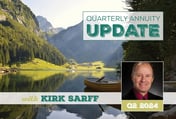Last week we talked about figuring out who your ideal client is. It’s possible to categorize groups of people into endless “buckets”, but a research group (Esri) recently produced a report using a combination of census data, education, spending habits, and lifestyle segmentation to come up with a reasonable number — nine. These categories are broad and made up of generalities, but see if any of them apply to your clients.
- Prosperous Empty Nesters
- Silver and Gold
- Rustbelt Retirees
- Retirement Communities
- The Elders
- Senior Sun Seekers
- Heartland Communities
- Simple Living
- Social Security Set
Group Definitions
Prosperous Empty Nesters
Active, affluent married couples with no children at home, transitioning from child-rearing to retirement; found throughout the United States, with many located on each of the coasts
Silver and Gold
Wealthy, educated seniors retired from professional occupations, half of whose households consist of married couples who’ve never had children; more than 60 percent located in the South, mainly in Florida, and 25 percent in the West, primarily in California and Arizona
Rustbelt Retirees
Married couples, with no children, or singles content to stay put in Rustbelt industrial cities; 67 percent located in the Northeast and Midwest
Retirement Communities
Older, educated singles who live alone in multiunit buildings or assisted-living facilities; found mostly in cities scattered around the United States
The Elders
Retirees in senior communities, primarily in Florida, Arizona, and California
Senior Sun Seekers
Fast-growing market of retired or soon-to-retire residents in the South and West, especially in Florida
Heartland Communities
Small-town neighborhoods with a country lifestyle in the Midwest and South
Simple Living
Lower-income seniors who rent in US urban outskirts or suburbs
Social Security Set
Seniors subsisting on very low fixed incomes in low-rent apartments in high‐rise buildings in large cities
Which group(s) do your clients fall into? Which groups would you prefer to work with? One simple example we can glean from the Esri report is that Prosperous Empty Nesters are 25% more likely than the national average to carry life insurance, while the Social Security Set are 18% less likely than average. Simply put - it’s probably going to be more profitable going after clients who have some money!
Here’s the takeaway — if you start thinking of your clients in terms of whether they fit your idea of the “ideal client” you can then market to that specific type of client, and attract more of them.
Sources:



